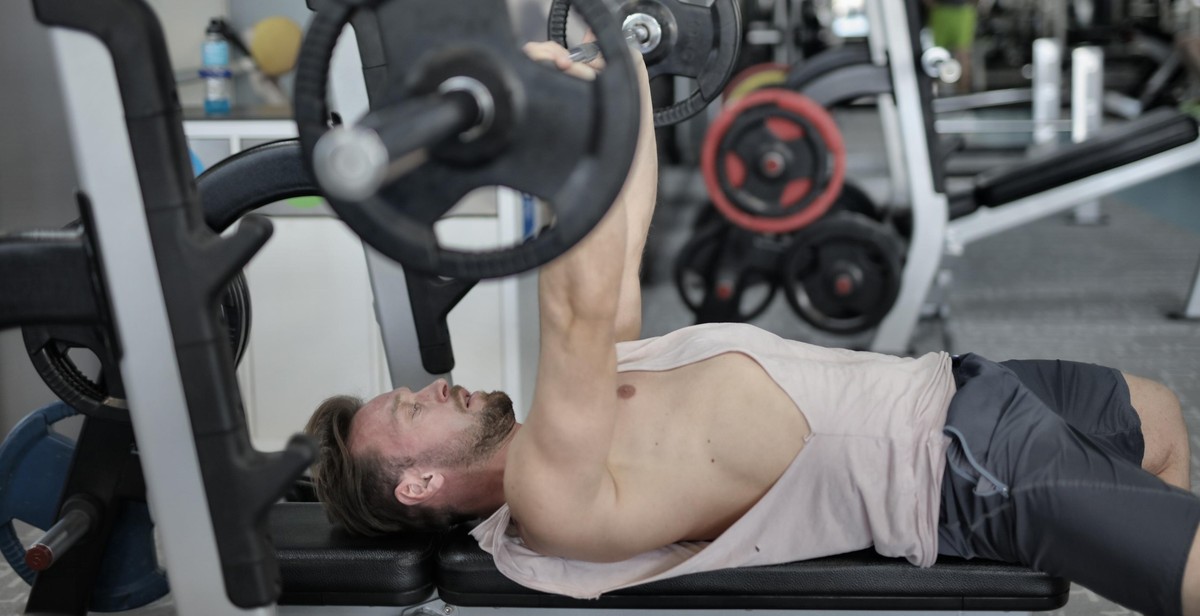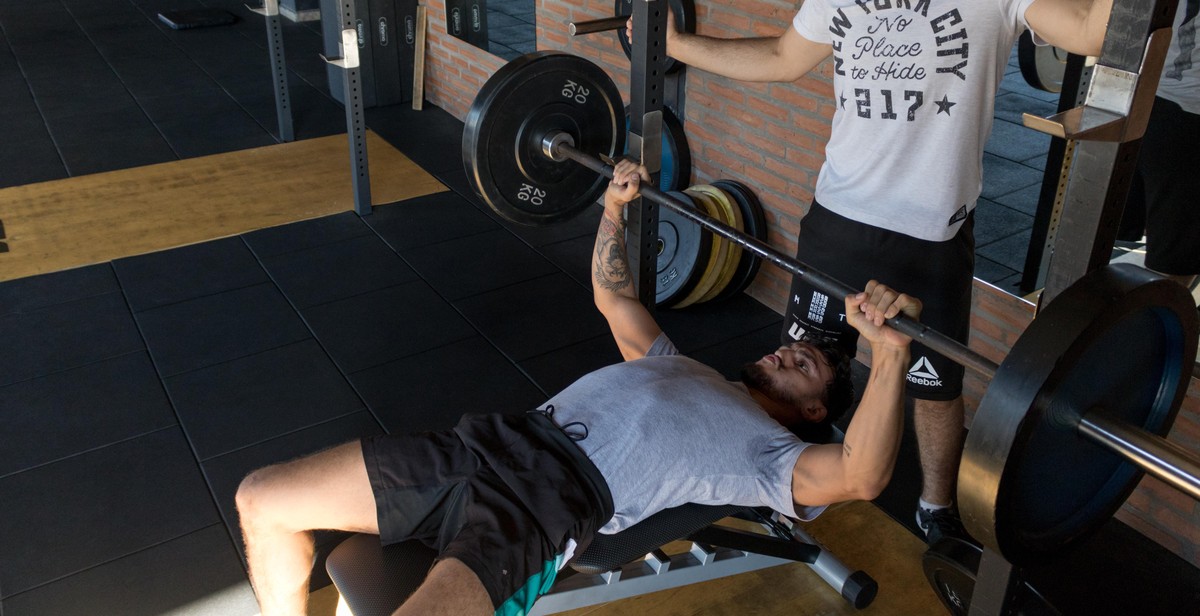How to Perform Correct Bench Press Technique for Upper Body Strength
Bench press is one of the most popular exercises for building upper body strength. It targets the chest, shoulders, and triceps, and is a staple exercise in any strength training program. However, performing the bench press with incorrect technique can lead to injuries and limit your progress. That’s why it’s important to learn the correct bench press technique.
Why Bench Press Technique is Important?
The bench press is a compound exercise that involves multiple joints and muscles. It requires proper technique to effectively target the intended muscles and avoid injury. Incorrect technique can also lead to muscle imbalances and decreased performance.
Some of the benefits of performing the bench press with correct technique include:
- Increased upper body strength and muscle mass
- Improved shoulder and chest stability
- Reduced risk of injury
- Improved performance in other upper body exercises
Whether you’re a beginner or an experienced lifter, learning and practicing proper bench press technique is crucial for achieving your strength and fitness goals.

The Bench Press Setup
The bench press is a popular exercise that is used to build upper body strength and muscle. However, to perform the bench press correctly, you need to make sure that you have the right equipment and that you set up the bench correctly. In this section, we’ll cover everything you need to know about the bench press setup.
Finding the Right Bench and Equipment
The first step in setting up for the bench press is finding the right bench and equipment. You want to make sure that the bench you use is sturdy and can support the weight you’ll be lifting. Look for a bench that is at least 48 inches long and has a weight capacity of at least 500 pounds.
You’ll also need a barbell and weights. Make sure that the barbell is the right weight for your level of experience and that the weights are evenly distributed on each side of the bar.
Setting up the Bench
Once you have the right equipment, it’s time to set up the bench. Start by adjusting the height of the bench so that it’s comfortable for you to lie down on. The bench should be low enough so that your feet can touch the ground, but not so low that your back is arched when you’re lying down.
Next, position the bench so that it’s centered under the barbell. Make sure that the barbell is at the right height for you to reach it comfortably when lying down on the bench.
Gripping the Barbell
Finally, it’s time to grip the barbell. Lie down on the bench and position yourself so that your eyes are directly under the bar. Reach up and grip the bar with your hands slightly wider than shoulder-width apart. Make sure that your grip is even on both sides of the bar and that your wrists are straight.
Once you have a good grip on the bar, engage your shoulder blades and push your chest up towards the bar. This will help you maintain proper form and prevent injury.
Now that you have the right equipment and have set up the bench correctly, you’re ready to start performing the bench press. In the next section, we’ll cover the proper technique for performing the bench press.

The Correct Bench Press Technique
Bench press is one of the most popular exercises for building upper body strength. However, performing it with incorrect technique can lead to injuries and limit your progress. Here is the correct bench press technique:
Unracking the Barbell
Before starting the exercise, make sure the barbell is at the appropriate height on the rack. Lie down on the bench with your eyes directly under the barbell. Grip the bar with your hands slightly wider than shoulder-width apart. Lift the bar off the rack and hold it over your chest with your arms extended. Make sure your elbows are locked and your shoulders are pulled back.
Breathing Technique
Take a deep breath and hold it before lowering the bar. This will help you maintain stability and control throughout the movement. Exhale forcefully when you press the bar upwards.
Lowering the Barbell
Lower the bar towards your chest in a controlled manner. Keep your elbows at a 45-degree angle to your body and tuck them in slightly. Lower the bar until it touches your chest or comes close to it.
Pressing the Barbell Upwards
Push the bar upwards with force, keeping your elbows at the same angle and direction throughout the movement. Keep your feet flat on the ground and your buttocks firmly on the bench. Use your chest and triceps to push the bar upwards.
Racking the Barbell
When you finish the set, bring the bar back towards the rack in a controlled manner. Make sure the bar is securely in place before releasing your grip.
By following this correct bench press technique, you can prevent injuries and maximize your upper body strength gains.

Common Mistakes to Avoid in Bench Press Technique
When performing a bench press, it is important to maintain proper technique to avoid injury and maximize results. Here are some common mistakes to avoid:
Bouncing the Barbell Off the Chest
One of the most common mistakes people make when performing a bench press is bouncing the barbell off their chest. This can lead to injury and also reduces the effectiveness of the exercise. Bouncing the barbell off the chest reduces the amount of time under tension, which is essential for building strength and muscle mass. It also increases the risk of injury to the chest, shoulders, and arms.
To avoid this mistake, lower the barbell slowly and under control, and pause briefly at the bottom of the movement before pressing the weight back up.
Arching the Back Too Much
Another common mistake is arching the back too much during the bench press. While some arch is necessary to maintain proper form and engage the chest muscles, excessive arching can strain the lower back and lead to injury.
To avoid this mistake, keep your lower back flat against the bench throughout the movement. If you find yourself arching too much, try lowering the weight or focusing on engaging your core muscles to maintain proper form.
Lifting the Head and Neck Off the Bench
Many people lift their head and neck off the bench during the bench press, which can strain the neck and shoulders and reduce the effectiveness of the exercise. Lifting the head and neck also reduces stability and can increase the risk of injury.
To avoid this mistake, keep your head and neck in a neutral position throughout the movement. Focus on keeping your eyes fixed on a point on the ceiling and maintain proper form throughout the exercise.
- Don’t bounce the barbell off your chest.
- Avoid excessive arching of the back.
- Keep your head and neck in a neutral position.
By avoiding these common mistakes, you can perform the bench press safely and effectively, and achieve your desired results.

Incorporating Bench Press into Your Workout Routine
Now that you know the correct bench press technique, it’s time to incorporate it into your workout routine. Here are some tips on how to do that:
Frequency
The frequency of bench press workouts will depend on your fitness goals and current fitness level. For beginners, it’s recommended to start with one to two bench press workouts per week, with at least one day of rest in between. As you progress, you can increase the frequency to three to four times per week, but make sure to listen to your body and avoid overtraining.
Variations
Adding variations to your bench press workouts can help target different muscle groups and prevent boredom. Some popular variations include:
- Incline bench press: This variation targets the upper chest and shoulders. To perform, set the bench to a 30-45 degree angle and perform the bench press as usual.
- Close-grip bench press: This variation targets the triceps. To perform, grip the barbell with your hands close together, about shoulder-width apart.
- Dumbbell bench press: This variation adds an element of instability, which can help improve core strength. To perform, hold a dumbbell in each hand and perform the bench press as usual.
- Paused bench press: This variation helps improve strength at the bottom of the lift. To perform, pause for 2-3 seconds at the bottom of the lift before pressing the barbell back up.
By incorporating bench press into your workout routine with the right frequency and variations, you can improve your upper body strength and achieve your fitness goals.

Conclusion
The bench press is undoubtedly one of the most effective exercises for building upper body strength, but it must be done correctly to avoid injury and maximize results. By following the correct technique, you can target the chest, shoulders, and triceps while also engaging the core muscles.
Remember to start with a warm-up and gradually increase the weight as you progress. Keep your feet flat on the floor, your back flat against the bench, and your elbows tucked in at a 45-degree angle. Lower the bar to your mid-chest and push it back up in a controlled motion.
It’s also important to incorporate variations into your routine to prevent plateauing and to challenge your muscles in different ways. Experiment with different grip widths, bar types, and angles to target different muscle groups and add variety to your workouts.
Finally, don’t forget to listen to your body and take breaks when necessary. Overtraining can lead to injury and setbacks, so make sure to give your muscles time to rest and recover.
By incorporating these tips into your bench press routine, you can improve your upper body strength and achieve your fitness goals.
